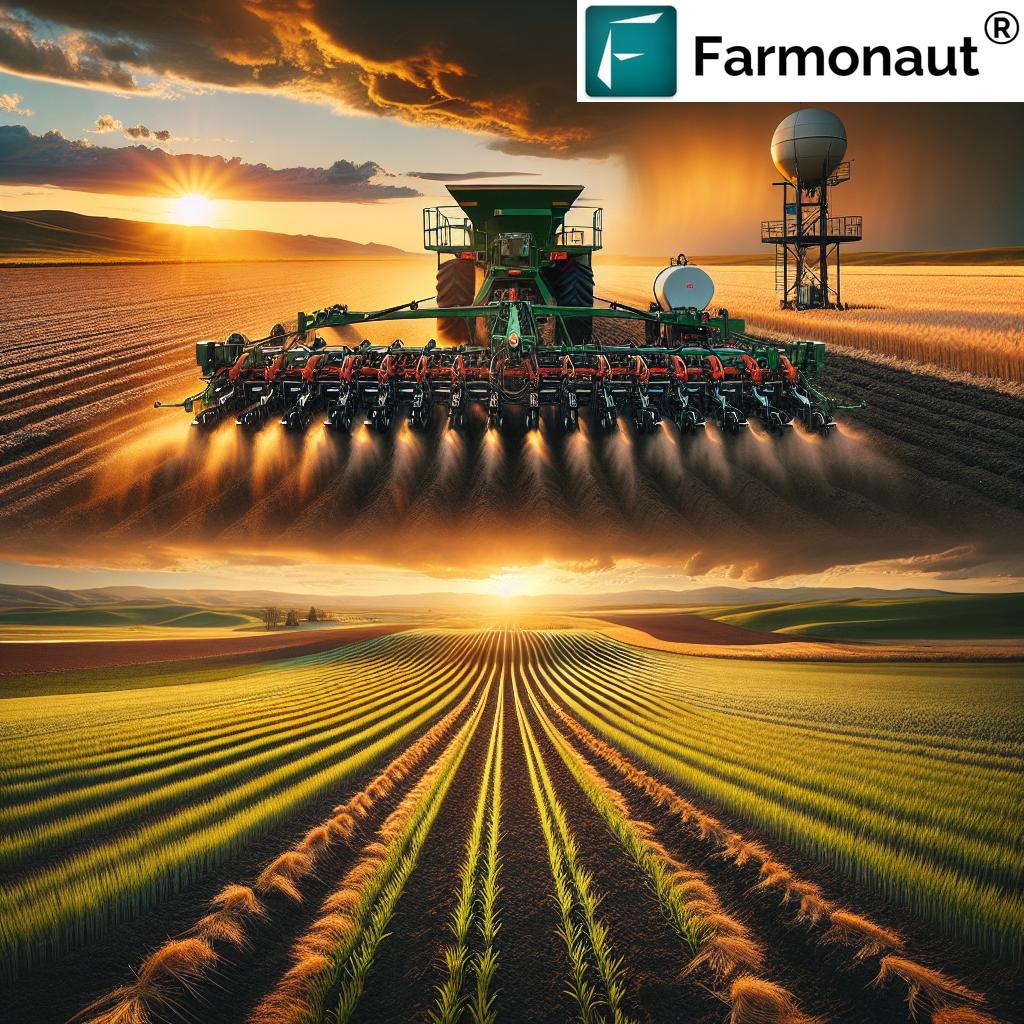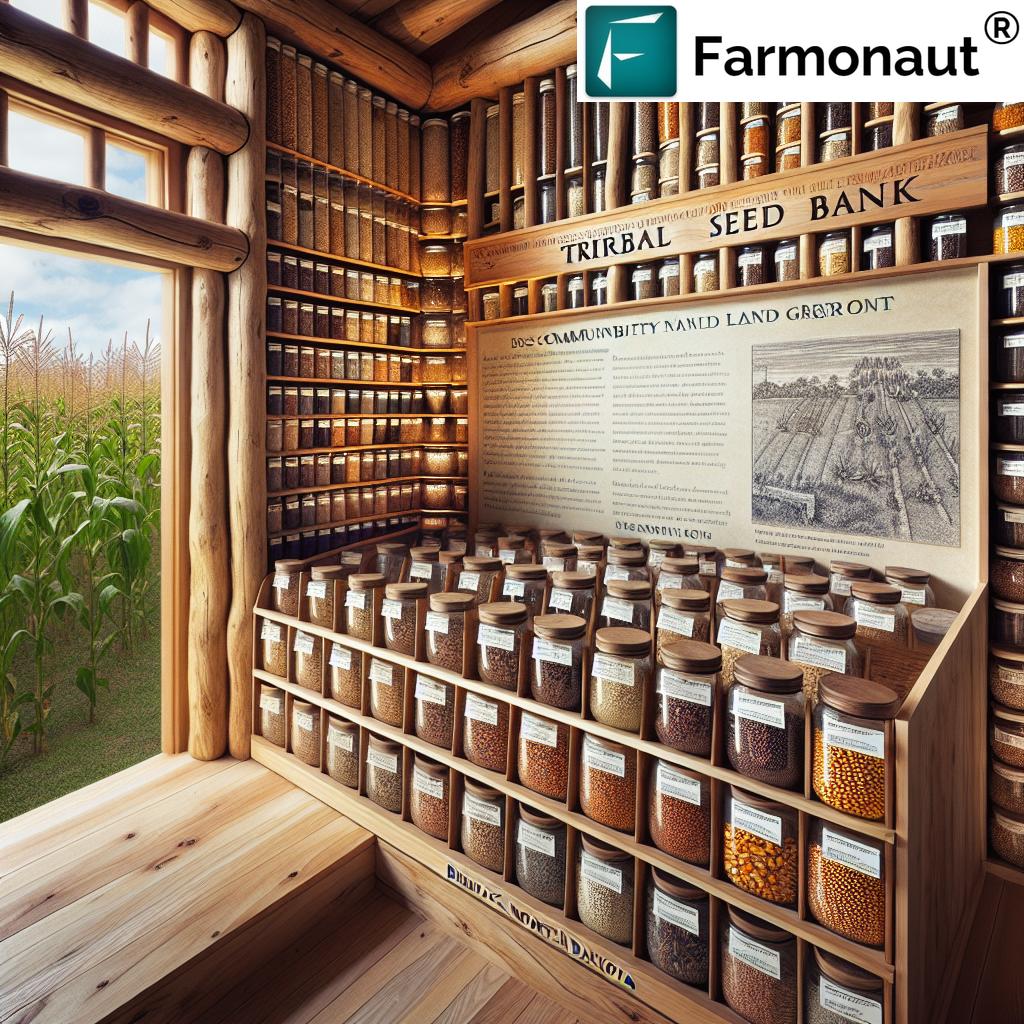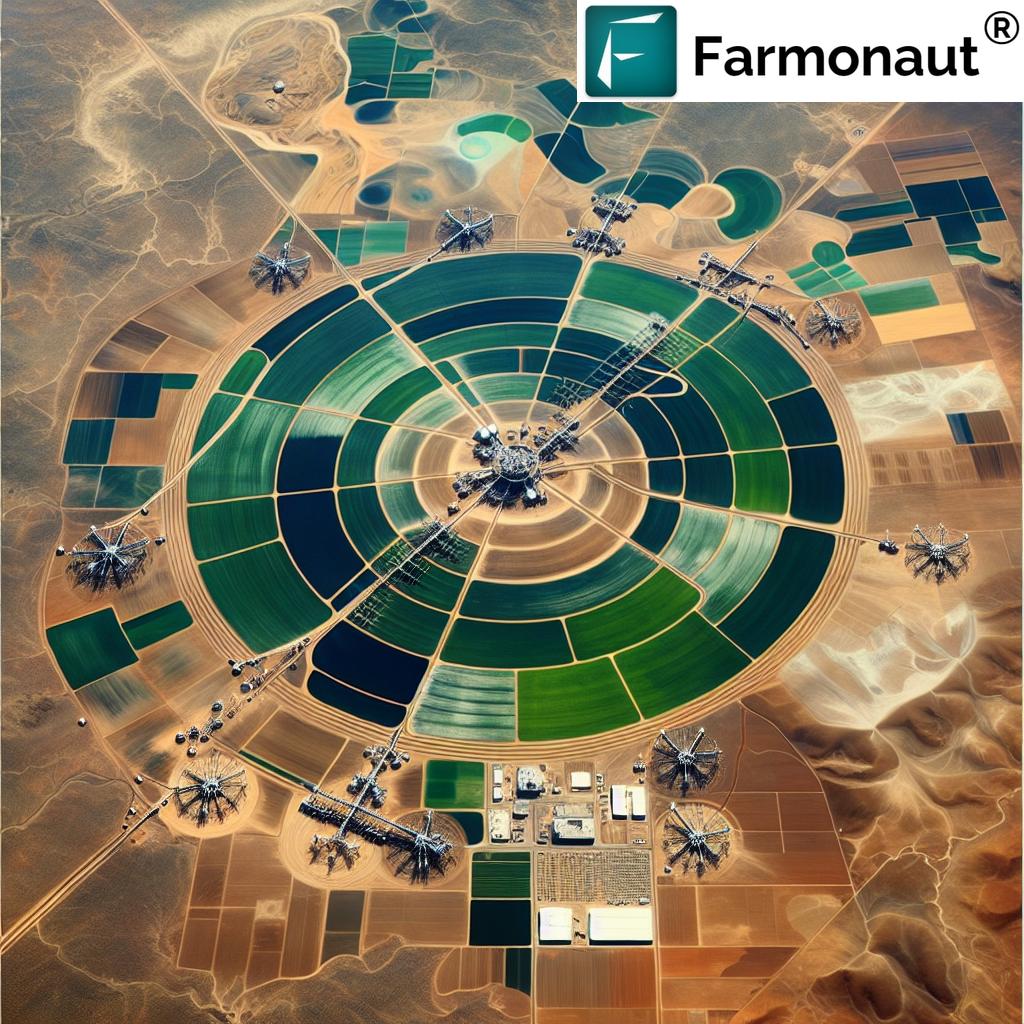Indianapolis Agribusiness Outlook: Q4 Financial Results and Future Profit Projections for 2024
“Despite a $41 million loss, an Indianapolis-based agriculture company’s Q4 revenue reached $3.98 billion, surpassing forecasts.”
Welcome to our comprehensive analysis of the agricultural sector’s financial landscape, focusing on the recent Q4 financial results of a major Indianapolis-based agriculture company and the projections for 2024. As we delve into this complex topic, we’ll explore the implications for the farming industry, investors, and the broader economy.
The Current State of Agribusiness in Indianapolis
The agricultural sector in Indianapolis, like many parts of the Midwest, plays a crucial role in the region’s economy. However, recent financial reports from a significant player in the industry have painted a mixed picture of the current state of agribusiness.
Corteva, Inc., a prominent agricultural company based in Indianapolis, recently released its Q4 financial results, which fell short of Wall Street expectations. Despite this setback, there are several factors to consider when evaluating the overall health of the agricultural sector.
Q4 Financial Results: A Closer Look
Let’s break down the key figures from Corteva’s Q4 financial results:
- Net Loss: $41 million
- Loss per Share: 6 cents
- Adjusted Earnings per Share: 32 cents
- Revenue: $3.98 billion
While the net loss is concerning, it’s important to note that the company’s revenue surpassed forecasts. Analysts had predicted revenue of $3.95 billion, but Corteva managed to exceed this expectation.

Factors Influencing Agricultural Company Earnings Reports
Several factors contribute to the complexity of agricultural company earnings reports:
- Seasonal Fluctuations: Agriculture is highly seasonal, which can lead to significant variations in quarterly results.
- Weather Conditions: Extreme weather events can dramatically impact crop yields and, consequently, financial performance.
- Global Market Dynamics: International trade policies and global demand for agricultural products play a crucial role in shaping earnings.
- Technological Advancements: Investments in agricultural technology can impact short-term earnings but potentially lead to long-term gains.
As we analyze Corteva’s Q4 financial results, it’s essential to consider these factors and their potential influence on the company’s performance.
Wall Street Expectations for Agribusiness
Wall Street analysts play a significant role in shaping investor expectations for agribusiness performance. In the case of Corteva, analysts had anticipated earnings of approximately 34 cents per share. The company’s adjusted earnings of 32 cents per share fell slightly short of this expectation.
This discrepancy between expected and actual results highlights the challenges in predicting agricultural sector performance. Factors such as weather patterns, global trade dynamics, and technological advancements can all contribute to variations in financial outcomes.
The Impact of Wall Street Expectations on Agribusiness
When agricultural companies fail to meet Wall Street expectations, it can have several consequences:
- Stock Price Fluctuations: Share prices may decline as investors react to disappointing results.
- Investor Confidence: Repeated misses can erode investor confidence in the company and the sector as a whole.
- Access to Capital: Companies that consistently underperform may face challenges in securing favorable financing terms.
- Strategic Decision-Making: Management may feel pressure to focus on short-term results at the expense of long-term growth strategies.
However, it’s crucial to remember that Wall Street expectations are just one piece of the puzzle when evaluating the health of an agribusiness or the broader agricultural sector.
Agricultural Sector Revenue Growth: A Broader Perspective
While Corteva’s Q4 results may have fallen short of expectations in terms of earnings, the company’s revenue performance tells a different story. The $3.98 billion in revenue surpassed analyst predictions, indicating strength in the company’s market position despite bottom-line challenges.
This revenue growth is reflective of broader trends in the agricultural sector. Factors contributing to revenue growth in agriculture include:
- Increasing Global Food Demand: As the world population grows, so does the need for agricultural products.
- Diversification of Crop Portfolios: Many agricultural companies are expanding their product offerings to capture new market segments.
- Adoption of High-Value Crops: Farmers are increasingly turning to crops with higher profit margins.
- Technological Advancements: Precision agriculture and other innovations are helping to increase yields and efficiency.
Speaking of technological advancements, companies like Farmonaut are at the forefront of revolutionizing the agricultural sector. Farmonaut offers advanced, satellite-based farm management solutions that can significantly impact agricultural productivity and profitability. Their android, iOS, and web applications provide farmers with valuable insights for decision-making.
Crop Science Company Forecast: Looking Ahead to 2024
“The crop science company projects earnings between $2.70 and $2.95 per share for the upcoming fiscal year.”
Despite the challenges faced in Q4, Corteva’s forecast for the upcoming fiscal year remains cautiously optimistic. The company projects earnings between $2.70 and $2.95 per share, with revenue expected to fall within the range of $17.2 billion to $17.6 billion.
This forward-looking guidance provides several insights into the company’s expectations for the agricultural sector:
- Anticipated Market Recovery: The projected earnings growth suggests that the company expects market conditions to improve.
- Continued Revenue Expansion: The forecasted revenue range indicates ongoing growth in the company’s market share or product demand.
- Operational Efficiency: The expected earnings improvement may reflect planned cost-cutting measures or increased productivity.
- Investment in Innovation: The guidance likely factors in returns from ongoing investments in agricultural technology and research.
Agribusiness Profit and Loss Analysis: Understanding the Numbers
To gain a deeper understanding of the financial health of agribusinesses like Corteva, it’s essential to conduct a thorough profit and loss analysis. This analysis helps investors, industry analysts, and company stakeholders identify strengths, weaknesses, and areas for improvement.
Key Components of Agribusiness Profit and Loss Analysis
- Revenue Sources: Breaking down income streams by product lines, geographical regions, and customer segments.
- Cost of Goods Sold (COGS): Analyzing the direct costs associated with producing agricultural products.
- Operating Expenses: Evaluating costs related to research and development, marketing, and administrative functions.
- Gross Margin: Assessing the profitability of core operations by subtracting COGS from revenue.
- Net Income: Determining the bottom-line profitability after accounting for all expenses and taxes.
Let’s take a closer look at how these components played out in Corteva’s recent financial results:
| Financial Metrics | Q4 Results (Company) | Q4 Results (Industry Average) | 2024 Projections (Company) | 2024 Projections (Industry Average) |
|---|---|---|---|---|
| Total Revenue | $3.98 billion | $3.95 billion | $17.2 – $17.6 billion | $17.5 billion |
| Net Income/Loss | -$41 million | $10 million | $1.9 – $2.1 billion | $2.0 billion |
| Earnings per Share | -$0.06 | $0.05 | $2.70 – $2.95 | $2.80 |
| Operating Margin | -1.03% | 2.5% | 11% – 12% | 11.5% |
| Return on Investment | -0.5% | 1.2% | 8% – 9% | 8.5% |
This table provides a clear comparison between Corteva’s performance and industry averages, both for the recent Q4 results and projections for 2024. It highlights areas where the company is outperforming or lagging behind industry benchmarks.
Farming Industry Financial Outlook: Navigating Challenges and Opportunities
As we look ahead to 2024 and beyond, the farming industry faces a complex landscape of challenges and opportunities. Understanding these factors is crucial for farmers, investors, and policymakers alike.
Key Factors Shaping the Farming Industry Financial Outlook
- Climate Change: Increasingly unpredictable weather patterns are forcing farmers to adapt their practices and invest in resilience measures.
- Technological Advancements: Precision agriculture, AI-driven analytics, and automation are transforming farming operations.
- Global Trade Dynamics: Changing trade policies and international relations continue to impact agricultural markets.
- Consumer Preferences: Growing demand for organic, sustainable, and plant-based products is reshaping agricultural production.
- Labor Shortages: Many farming regions are grappling with workforce challenges, driving interest in automation and robotics.
In this evolving landscape, innovative solutions like those offered by Farmonaut are becoming increasingly vital. Farmonaut’s satellite-based crop health monitoring and AI-driven advisory systems can help farmers navigate these challenges more effectively.
Agricultural Technology Investments: Driving Future Growth
Investment in agricultural technology, or AgTech, is playing an increasingly crucial role in shaping the future of farming. Companies like Corteva and innovative startups are pouring resources into developing new technologies that promise to increase efficiency, sustainability, and profitability in agriculture.
Key Areas of Agricultural Technology Investment
- Precision Agriculture: GPS-guided equipment, drone technology, and IoT sensors for optimized resource use.
- Data Analytics: AI and machine learning algorithms to process vast amounts of agricultural data for insights.
- Biotechnology: Developing more resilient and productive crop varieties through genetic research.
- Automation: Robotic systems for planting, harvesting, and other labor-intensive tasks.
- Sustainable Farming: Technologies focused on reducing environmental impact and promoting soil health.
These investments are not just about improving current operations; they’re about preparing the agricultural sector for future challenges and opportunities. As we’ve seen with companies like Farmonaut, technology can provide farmers with unprecedented insights into their operations, leading to more informed decision-making and improved outcomes.
Crop Protection Market Trends: Balancing Productivity and Sustainability
The crop protection market is another critical area influencing agricultural financial performance. As farmers seek to maximize yields while minimizing environmental impact, trends in this market can significantly affect company earnings and industry outlook.
Emerging Trends in Crop Protection
- Biological Solutions: Growing demand for natural and organic pest control methods.
- Precision Application: Technologies that enable more targeted and efficient use of crop protection products.
- Integrated Pest Management: Holistic approaches that combine multiple strategies for pest control.
- Climate-Adaptive Products: Developing crop protection solutions that perform well under changing climate conditions.
- Digital Pest Monitoring: Using AI and satellite imagery to detect and predict pest outbreaks.

Companies that can effectively navigate these trends and develop innovative crop protection solutions are likely to see stronger financial performance in the coming years.
The Role of Technology in Shaping Agricultural Futures
As we’ve explored throughout this analysis, technology is playing an increasingly central role in the agricultural sector. From precision farming techniques to advanced data analytics, technological innovations are reshaping how farms operate and how agricultural companies approach their businesses.
Farmonaut exemplifies this trend with its comprehensive suite of agricultural technology solutions. By leveraging satellite imagery, AI, and blockchain technology, Farmonaut is helping farmers and agribusinesses optimize their operations and improve profitability.
For those interested in leveraging these cutting-edge technologies, Farmonaut offers a range of services accessible through their web and mobile applications. Additionally, developers and businesses can integrate Farmonaut’s satellite and weather data into their own systems through the company’s API.
Explore Farmonaut’s API: https://sat.farmonaut.com/api
API Developer Docs: https://farmonaut.com/farmonaut-satellite-weather-api-developer-docs/
Looking Ahead: What the Future Holds for Agribusiness
As we conclude our analysis of the Indianapolis agribusiness outlook and future profit projections for 2024, it’s clear that the agricultural sector is at a pivotal juncture. While challenges persist, as evidenced by Corteva’s recent Q4 results, there are also significant opportunities on the horizon.
The future of agribusiness will likely be shaped by several key factors:
- Continued technological innovation and adoption
- Evolving consumer preferences and demand for sustainable products
- Global economic and trade dynamics
- Climate change adaptation and mitigation strategies
- Regulatory environments and policy decisions
Companies that can successfully navigate these factors, leveraging technology and data-driven insights, will be best positioned for success in the coming years.
Conclusion: Navigating the Complex Landscape of Modern Agriculture
The agricultural sector, as exemplified by the recent financial results and future projections of Indianapolis-based Corteva, faces a complex and challenging landscape. While short-term setbacks may occur, the industry’s long-term outlook remains cautiously optimistic, driven by technological advancements, growing global food demand, and innovative approaches to sustainable farming.
For investors, farmers, and industry stakeholders, staying informed about the latest trends, technologies, and market dynamics will be crucial. Companies like Farmonaut are at the forefront of this agricultural revolution, offering tools and insights that can help navigate the complexities of modern farming.
As we move forward, the integration of cutting-edge technology, data-driven decision-making, and sustainable practices will likely play an increasingly important role in shaping the financial success of agribusinesses and the broader agricultural sector.
FAQ: Indianapolis Agribusiness Outlook and 2024 Projections
- Q: What were the key findings from Corteva’s Q4 financial results?
A: Corteva reported a $41 million loss but surpassed revenue forecasts with $3.98 billion in Q4. - Q: How do Corteva’s results compare to Wall Street expectations?
A: The company’s adjusted earnings of 32 cents per share fell slightly short of the expected 34 cents. - Q: What are Corteva’s projections for 2024?
A: Corteva forecasts earnings between $2.70 and $2.95 per share, with revenue between $17.2 billion and $17.6 billion. - Q: How is technology impacting the agricultural sector?
A: Technology like precision agriculture, AI analytics, and satellite monitoring is revolutionizing farming practices and decision-making. - Q: What role does a company like Farmonaut play in modern agriculture?
A: Farmonaut provides advanced satellite-based farm management solutions, helping farmers optimize their operations through data-driven insights.
Earn With Farmonaut: Join Our Affiliate Program
Earn 20% recurring commission with Farmonaut’s affiliate program by sharing your promo code and helping farmers save 10%. Onboard 10 Elite farmers monthly to earn a minimum of $148,000 annually—start now and grow your income!
Learn more: https://farmonaut.com/affiliate-program
Explore Farmonaut’s Subscription Options
By leveraging innovative solutions like those offered by Farmonaut, agribusinesses can position themselves for success in an increasingly complex and technology-driven industry. As we look towards 2024 and beyond, the integration of advanced technologies and data-driven decision-making will likely play a crucial role in shaping the financial future of the agricultural sector.
















